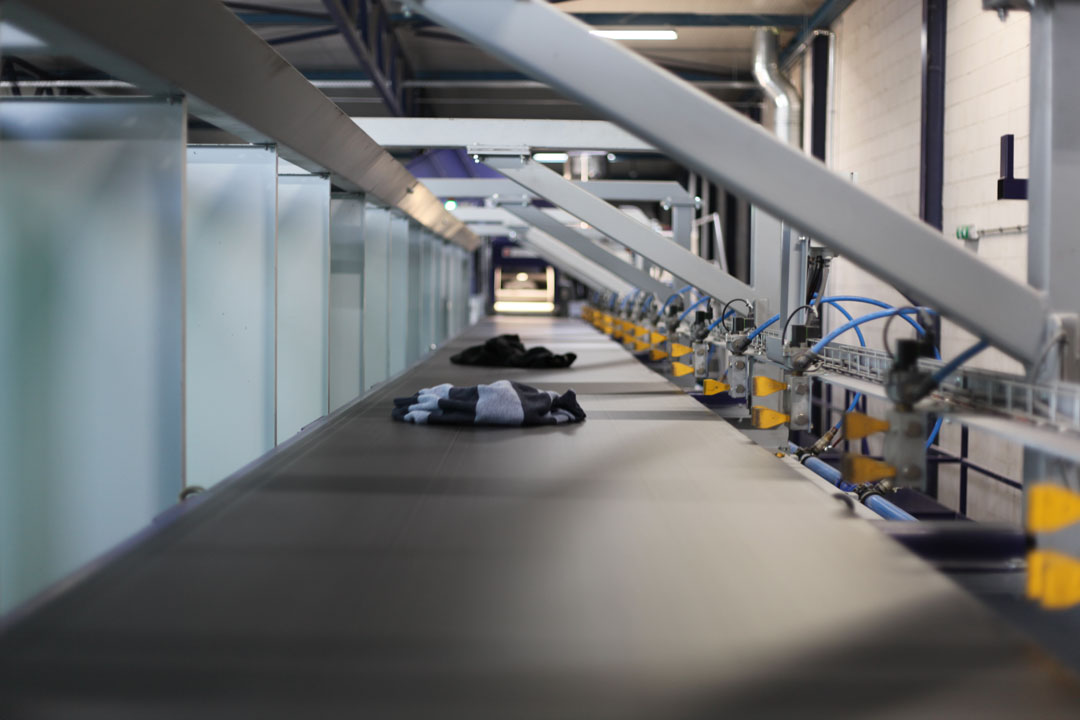Discarded garments: to the crematorium or reborn into a new lifecycle?
After many years of an intensive collaboration and substantial investments in research and development, on March 14th 2018, Valvan Baling Systems and Wieland Textiles proudly launched Fibersort. For the first time in the history of textile recycling, this optical sorting technology enables the quick and efficient scanning and sorting of numerous stacks of garments into uniform categories of fibers with specified compositions, colours and/or structures. This paves the way for a circular revolution in the textile industry: a cost-efficient recovery of highly valuable raw materials from discarded garments for the production of new clothes.
In the context of the huge waste and pollution that is caused by the linear fashion industry, the market potential of Fibersort can hardly be overestimated. In the Netherlands, Fibersort could prevent 170,000 tons of discarded garments from a useless demise in the ‘crematorium’ of a waste incineration plant. Or, in other words: with Fibersort over 170,000 tons of discarded garments can be upcycled as valuable raw materials for new clothes!
Fibersort is able to sort 900 kilo of post-consumer textiles per hour
Fibersort is a fully automatic installation in combination with an optical detection port at the beginning of a conveyor belt, that is equipped with air blowers and bags to store sorted clothes. During the input of a stack of clothes, first the assembled clothes, such as jackets and coats, are removed. A garment that is composed out off multiple materials, such as a lined coat, will not be recognized by the optical detection system of Fibersort. Subsequently, garments that are not composed out off multiple materials will be placed under the detection eye of Fibersort at high speed for a 3D scan and analysis by means of spectrography. Fibersort is now able to sort 900 kilo of post-consumer textiles per hour.
Every fiber has its own unique spectrum of colours and therefore, by means of dedicated software, the computer can make a high-speed analysis based on the composition, colour and structure of the used fibers. After this analysis, the garments are transported by the conveyor belt to the location where an air blower blows the analysed clothes in a bag used for the specific group of garments – with one specific composition, colour and structure of fibers, such as a bag with red and woven garments that consist for 60 per cent of cotton and for 40 per cent of polyester.
The supply is there, waiting for its demand
Thanks to Fibersort, it is possible to sort garments in a split second very accurately, based on the composition, colour and structure of the fabric. For the fashion industry this technology offers a very promising output of potentially huge and consistent volumes of highly valuable discarded garments. In Europe and the United States, annually approximately 20 million tons of used and unused garments end up on dump sites and in waste incineration plants. Fibersort is a potential gamechanger which makes it possible to transform this huge bulk of waste effectively into an enormous supply of raw materials for the production of new clothes. The necessary technology for the transition to a circular textiles-economy is up and running. In order to pave the way to a successful transition, a further optimization of the technology and more incentives to increase the demand for raw materials from discarded garments, are crucial.
Therefore, Wieland Textiles and Valvan Baling Systems are joining forces with other frontrunners in de textile industry to develop a new manufacturing industry based on raw materials from discarded textiles. With this ambition, these parties are building a comprehensive network of motivated and committed partners that are active in the production and recycling of textiles. This network is developed as part of the Interreg North-West Europe project ‘Fibersort: closing the loop in the textiles industry’. Together, they share the ambition to seamlessly connect the links of the linear textile chains into a sustainable, circular textile economy.
In March 2020, the project was finalized and its outcomes were shared during an online webinar.



